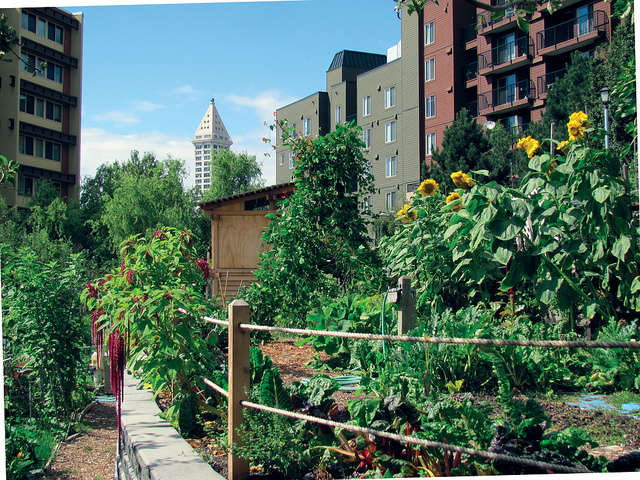City Blooming Things To Know Before You Get This
City Blooming Things To Know Before You Get This
Blog Article
More About City Blooming
Table of ContentsThe Facts About City Blooming UncoveredThe 6-Minute Rule for City BloomingCity Blooming - TruthsNot known Factual Statements About City Blooming The Best Strategy To Use For City Blooming
Interested in expanding food available in the City of Chicago? Considering starting a neighborhood yard? Changes to the Chicago Zoning Ordinance enable farming usages like community yards and city farms in lots of components of the city. Below is a checklist of often asked inquiries regarding the rules and regulations that farmers need to think about when intending a city agriculture task.
The zoning change does not modify any type of various other codes taking care of composting, structure authorizations, buying or renting City had residential property, company licenses or ecological contamination. There are existing codes that regulate these concerns and they stay completely impact and might be appropriate to your task. Area gardens are generally owned or taken care of by public entities, public companies or community-based organizations and preserved by volunteers.
Urban ranches expand food that is intended to be marketed, either on a not-for-profit or for-profit basis. Due to their business function, metropolitan farms need a service certificate.
Not known Details About City Blooming
Composting is enabled yet only for plant product that is generated and made use of on site. The amount of compost material can not surpass 25 cubic lawns at any kind of offered time according to the criteria in 7-28-715 of the City's Municipal Code. Yes. Due to the fact that the dirt at most brand-new garden websites needs changing, garden compost, soil, wood chips, or various other materials can be acquired to construct or boost the growing area - garden care.

If a structure authorization is required then the hoophouse will certainly be thought about an accessory building. You can learn even more regarding the structure permit demands by calling the Division of Structures. The 25,000-square-foot size restriction is meant to avoid a solitary community yard from controling a provided block or diminishing the block's existing domestic or industrial personality.
The limit does not apply to yards located in Public Open Area (POS) districts. Can there be more than one area garden that is 25,000 square feet on a solitary block? Fencing is not required, nevertheless, gardens that have large vehicle parking locations may be needed to mount fencing or other landscape design features.
City Blooming Fundamentals Explained
B1 & B2 areas call for that all industrial use tasks be carried out inside. Is secure fencing required for urban farms? Fences may be called for, along with landscaping and testing, for particular parking locations and outdoor job or storage locations depending on area and the details activity taking area.
Yes. Urban ranches require building licenses and zoning approvals prior to building and construction. Other types of city review may be needed depending upon particular frameworks, activities, dimension, landscape design, licensing, public health and stormwater monitoring concerns. Many of these requirements are determined in the job design or go to this site allowing process, nevertheless, the applicant may be responsible to individually recognize particular licenses or allows that might be needed.
The Division of Company Affairs and Consumer Security can help identify the certain kind of service license that's required. Off street car parking is needed for many commercial projects in Chicago. The required number of vehicle parking areas is based on the number of staff members working on website and not the square video of the growing space.
The 10-Second Trick For City Blooming

A metropolitan farm can sell compost product created on website, nonetheless, the procedure should comply with the policies in 7-28-715 of the Chicago Municipal Code. Aquaponic systems are permitted inside on city ranches in many zoning areas.
As much as 5 hives or swarms of honey bees may be kept as an accessory use. Beekeepers need to register with the Illinois Department of Agriculture. For more info about the recommended zoning change you might call the Department of Real Estate and Economic Development, Bureau of Preparation and Zoning at 312.744.8563.
Farming in cities and city areas An urban farm in Chicago. Urban agriculture describes various methods of cultivating. https://www.producthunt.com/@cityblooming11, handling, and distributing food in city areas. The term additionally relates to the area tasks of animal husbandry, tank farming, beekeeping, and cultivation in a city context. Urban agriculture is distinguished from peri-urban agriculture, which takes location in backwoods at the side of suburban areas.
The Only Guide to City Blooming
, who seek to create social networks founded on a shared values of nature and neighborhood holism. These networks can develop by way of formal institutional support, ending up being incorporated into neighborhood community preparation as a "transition community" activity for lasting urban growth.
Some of the very first evidence of urban farming comes from Mesopotamia.
Report this page